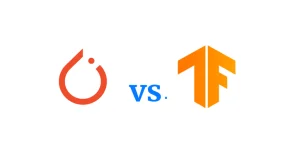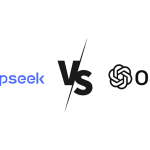PyTorch vs TensorFlow: Choosing the Right Framework
In the rapidly evolving field of deep learning, selecting the right framework is crucial for the success of your projects. Among the most popular options are PyTorch and TensorFlow. Both frameworks have their strengths and cater to different user needs. This article provides a comprehensive comparison to help you decide which framework is best suited for your deep learning endeavors.
As artificial intelligence continues to transform various industries, the choice of deep learning framework becomes increasingly significant. PyTorch vs TensorFlow is a common debate within the AI community. This article delves into their features, strengths, and weaknesses to assist you in making an informed decision.
Overview of PyTorch and TensorFlow
What is PyTorch?
PyTorch, developed by Facebook’s AI Research lab, is known for its dynamic computational graph and user-friendly interface. It offers seamless integration with Python, making it a preferred choice for researchers and developers who value flexibility and ease of use.
What is TensorFlow?
TensorFlow, created by the Google Brain team, is a versatile framework designed for both research and production. It provides robust tools for deploying machine learning models across various platforms, including mobile and web applications. TensorFlow’s static computational graph is one of its distinguishing features, contributing to its performance optimization capabilities.
Key Features Comparison
Ease of Use
PyTorch: PyTorch’s intuitive interface and dynamic graph construction make it highly accessible for beginners. Its code is generally more readable and easier to debug, which accelerates the development process. The flexibility offered by PyTorch allows developers to experiment with different architectures and algorithms without extensive boilerplate code.
TensorFlow: TensorFlow, while offering a comprehensive set of tools, has a steeper learning curve. However, TensorFlow 2.0 introduced eager execution, which simplifies model building and debugging, making it more user-friendly than its predecessor. TensorFlow’s static graph, although more complex, enables optimizations that can lead to faster execution times in production environments.
Performance and Scalability
TensorFlow: TensorFlow excels in performance, particularly for production environments. Its ability to optimize models for speed and efficiency, coupled with support for distributed computing, makes it suitable for large-scale deployments. TensorFlow’s Serving and TensorFlow Extended (TFX) provide robust solutions for model deployment and lifecycle management, ensuring that models can be served at scale with minimal latency.
PyTorch: PyTorch is often preferred for research due to its flexibility, but it has made significant strides in performance. While traditionally considered less scalable than TensorFlow, recent updates have improved PyTorch’s capabilities in handling larger datasets and models. The introduction of TorchScript allows PyTorch models to be optimized and deployed in production settings, bridging the gap between research and production.
Community and Ecosystem
TensorFlow: With its longer presence in the deep learning community, TensorFlow boasts a vast ecosystem. It includes TensorFlow Lite for mobile and embedded devices, TensorFlow.js for web development, and TensorFlow Extended (TFX) for production pipelines. The extensive documentation, tutorials, and community support make TensorFlow a robust choice for both beginners and experienced developers.
PyTorch: PyTorch’s community is rapidly growing, fueled by its popularity in academic and research settings. The PyTorch ecosystem includes tools like TorchServe for model serving and integration with popular libraries such as Hugging Face Transformers. PyTorch’s community-driven development approach ensures that it stays updated with the latest advancements in deep learning research.
Use Cases and Industry Adoption
Research and Prototyping
PyTorch: PyTorch’s flexibility and ease of use make it the framework of choice for researchers and academic institutions. Its dynamic graph construction allows for quick experimentation and prototyping, which is essential in the research phase. PyTorch’s close integration with Python’s scientific computing libraries, such as NumPy, further enhances its appeal for researchers.
TensorFlow: TensorFlow is also used extensively in research but shines in transitioning from research to production. Its comprehensive suite of tools facilitates the entire machine learning lifecycle, from model development to deployment. TensorFlow’s Model Optimization Toolkit and TensorFlow Hub offer pre-trained models and optimization techniques that can accelerate research and development.
Industry and Production
TensorFlow: TensorFlow’s robust performance optimization and scalability make it ideal for production environments. Companies like Google, Airbnb, and Uber rely on TensorFlow for their machine learning applications. TensorFlow Serving provides an efficient way to serve models in production, ensuring low latency and high throughput.
PyTorch: While PyTorch is gaining traction in the industry, especially with companies like Facebook and Tesla, it is often chosen for projects that require rapid development and iteration. PyTorch’s production capabilities are continually improving, making it a viable option for many industrial applications. The introduction of PyTorch Enterprise by Microsoft Azure and AWS support for PyTorch models signifies its growing acceptance in the industry.
Advanced Features and Integrations
TensorFlow Advanced Features
- TensorFlow Extended (TFX): A comprehensive platform for deploying production ML pipelines, TFX integrates well with Google Cloud and other enterprise solutions.
- TensorFlow Lite: A lightweight solution for deploying models on mobile and embedded devices, TensorFlow Lite optimizes models for size and performance.
- TensorFlow.js: Enables machine learning in JavaScript and can run models directly in the browser, opening up possibilities for interactive web applications.
- TensorFlow Hub: A repository of reusable machine learning modules that can be easily integrated into TensorFlow projects.
PyTorch Advanced Features
- TorchServe: A flexible and easy-to-use tool for serving PyTorch models, TorchServe simplifies the deployment process.
- TorchScript: Allows PyTorch models to be serialized and optimized for production, bridging the gap between research and deployment.
- Integration with Hugging Face: PyTorch’s seamless integration with Hugging Face’s Transformers library makes it a preferred choice for natural language processing (NLP) tasks.
- Support for ONNX: PyTorch models can be exported to the Open Neural Network Exchange (ONNX) format, enabling interoperability with other frameworks and deployment tools.
Conclusion: Which Framework Should You Choose?
The decision between PyTorch and TensorFlow ultimately depends on your specific needs and project requirements. If you prioritize ease of use and flexibility, particularly in a research or prototyping context, PyTorch is likely the better choice. On the other hand, if you require robust performance optimization, scalability, and a comprehensive suite of tools for production deployment, TensorFlow stands out as the superior option.
In summary, both PyTorch and TensorFlow are powerful frameworks that have significantly contributed to the advancement of deep learning. By understanding their unique strengths and aligning them with your project goals, you can make an informed decision that will enhance the success of your deep learning initiatives.
Want to Learn More?
If you’re interested in delving deeper into the specifics of PyTorch or TensorFlow, click on the following links:






